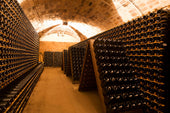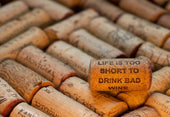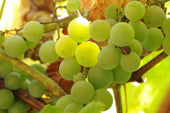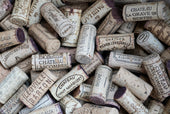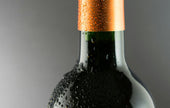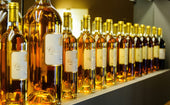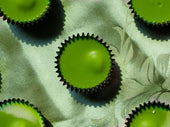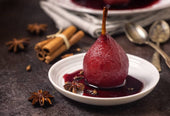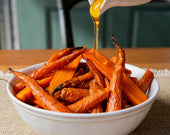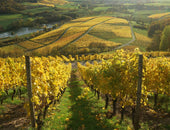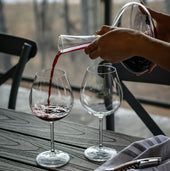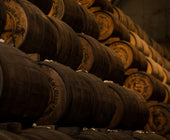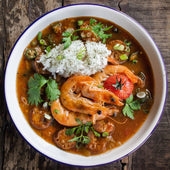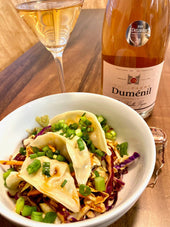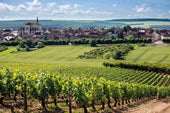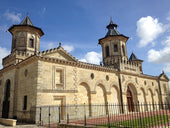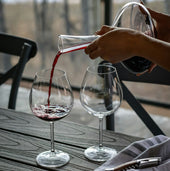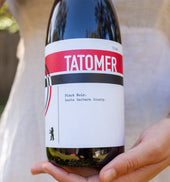
A Tale of Two Malbec

The Original Malbec: Cahors
Once a supporting role in red blends, Malbec has found its way to the center stage with the rise of its popularity from South America. This thin skinned dark colored grape actually has historical roots in France. Since the 16th century, Malbec has been growing in the Bordeaux and Cahors region. Bordeaux has moved on to Cabernet Sauvignon and Merlot, grapes that adapt well to that climate. However Malbec has found its home in Cahors, just east of Bordeaux where the cooling breeze from the Atlantic keeps the vines disease free, while warm daytime temperatures allow the grapes to ripen.
Cahors, a Gothic and Romaneque town is surrounded by the vineyards which forms the appellation it is named after. The Lot River which twists and turns thru the region provides a micro-climate that protects the vines from frost. The Lot River has been hollowing out this region for 15 millions years, depositing alluvium from the Massif Central. In this river valley, the terraces climbs up from the river, with distinct geological features further up the hill. The terrace that is closest to the river is the first terrace, with the richest, alluvial soil content. Wines made from this terrace tends to be lighter, fruitier and enjoyed at its youth. The further up the hill to the higher terraces, the wine tends to have more depth, body and complexity. The soil here has more clay, gravel and limestone content.
Also know as Auxerrois or Côt, over 85% of the vineyards planted here are dedicated to Malbec. Over the past few years, this sleepy wine region is now slowly waking up to outside influence. New generation of growers and winemakers are studying the soil, microclimate, elevation and introducing advanced technology to make wine. Malbec specialist and California winemaker Paul Hobbs is currently making wines in Cahors under the Crocus label. Hobbs, is also well known for making Malbec from Argentina called Felino.
The Land of Sun: Argentina
Malbec is the crown jewel of Argentina. It has made Mendoza a household name and association with the grape and this region is unbreakable. Malbec has come a long ways since the Romans in Cahors. In 1853, Michel Aime Pouget, a French agronomist was commissioned by President Domingo Faustino Sarmiento to carry out the management of the agriculture of the wineries in Mendoza. It was on April 17 ,1853, a project was presented to the local government to establish an agricultural school. With the help of Italian and French immigrants, the wine industry grew, along with Malbec.
Located in the foothill of the Andes, vineyards are planted from the valley floor and up to some of the higher altitudes. It lies on a high flat plain and with the Andes acting as a rain shadow, the area is more like the high dessert with sunny, dry and almost disease free environment. The Mendoza, Tunuyan and Diamante Rivers are fed by the Andes and help irrigate the valley vineyards.
In the Mendoza region, Malbec is the most planted grape. Within Mendoza there are numerous sub-regions that are divided up based on its location and terrior. Maipu is just south of the city of Mendoza, with the region's most historical wineries. The climate is warmer here, producing fruity and soft wines. Lujan de Cuyon and Uco Valley are known for its higher altitude and closer to the Andes Mountains. The wines here can be very elegant with aging potential.
Is higher better? Generally, vines grown at higher altitude can slow the ripening process, allowing grapes time to mature and slowly develop its sugar content and profile. This allows grapes to retain its acidity and fruit profile.

What's the Verdict?
What is the difference between Malbec from Argentina and from Cahors? Due to the intense sun, Argentina's version tends to have warm, ripe fruit with some new oak influence. Tannins are often "softer" with a smoother mouthfeel. While Cahor's version has a more structure, earthier, savory quality in addition to its darker color, higher acidity and moderate tannins. Cahor wines tends to have the ability to age a little longer.
Both Cahors and Argentina produce excellent Malbec, but very different in style. You can experience the comparative tasting buy trying a wine from Cahors and Argentina for yourself.
Suggested food pairings: Pork tenderloins, Cassoulet, Lamb, Steak
Photo Credit with permission from Vin de Cahors

